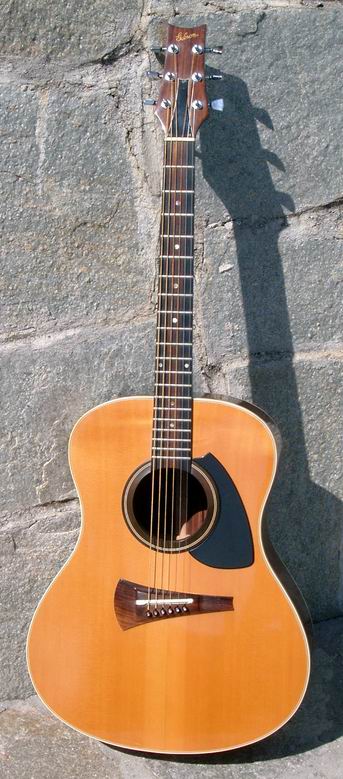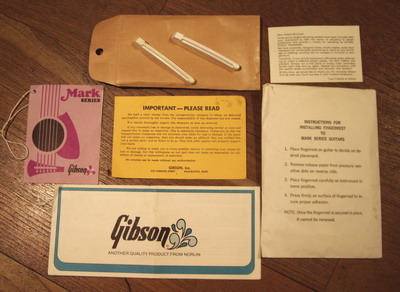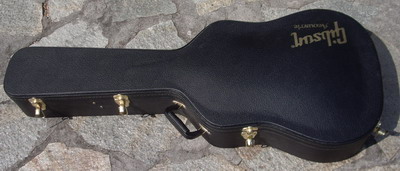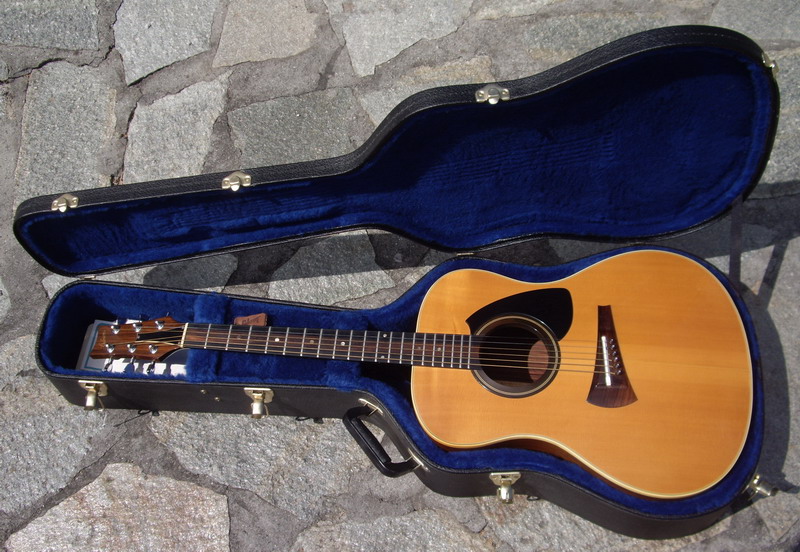




1977 GIBSON MK 72, Rosewood/Ebony, dot, Natural, 2° Year ed, Original Hard Case, 2 extra bridge saddles and all origimal papers and sheets, EX+
code AC510
The Mark Acoustics
During the ’70s, one of the big buzzes in the guitar press was the work of
Michael Kasha, a physics Ph.D. who was doing a thesis on the physical aspects of
acoustics as they relate to the mechanical system design of the acoustic guitar.
Kasha developed all these groovy variations on the standard fan bracing, with an
asymmetrical bridge that transferred heavier bass waves to the top via a fat
round part and thinner treble wave via a tapering skinny part, and other such
swell ideas derived from hours of staring at an oscilloscope. Another neat
feature, by the way, was a slide out interchangeable saddle.
A marriage of art and science
True to its experimental mentality, Gibson decided to pursue this scientific
approach to acoustic guitar design and using its discoveries, introduced the
Mark series which debuted in the Spring of 1975 and died in 1979. The first
active promotion of the Marks occurred in August of 1975 with full spread ads in
Guitar Player.
According to accounts published in The Music Trades, in May of ’73 Gibson began
the Mark story by contacting Dr. Adrian Houtsma, Professor of Acoustic Physics
at MIT, to confirm some research Gibson itself had initiated. Receiving a
favorable review, Gibson then went to Dr. Kasha, who was at the time, a chemical
physicist working as Director of the Institute of Molecular Biophysics at
Florida State University. Combining the findings from Gibson’ R&D department and
Drs. Houtsma and Kasha, the company finally landed on the doorstep of well known
luthier Richard Schneider, who was charged with making the scientific
information practical, designing a guitar that fit with Gibson’s aesthetics and
capable of being put into production. The Mark series was born.
Eventually six Marks were produced. They were, to wit, the MK-99, MK-81, MK-72,
MK-53, MK-35 and MK-35-12. The model number, by the way, is branded into the
back joint strip, visible through the soundhole. Appointments, according to
Gruhn’s Guide to Vintage Guitars, were as follows. MK-99 custom order handmade
by Schneider with gold parts, steel or classical. The MK-81 had a rosewood body,
removable pickguard, ebony board with abalone block inlays and gold hardware.
The MK-72 had a rosewood body, a three-piece ebony/rosewood/ebony board, dot
inlays and nickel hardware. The MK-53 (shown here) had a maple body, rosewood
board, dot inlays and nickel hardware. The MK-35 had a mahogany body. The
MK-35-12 was a 12-string; only 12 were made in 1977.
Gibson Guitars The Experimental ’70s By Michael Wright in Vintage Guitar
magazine